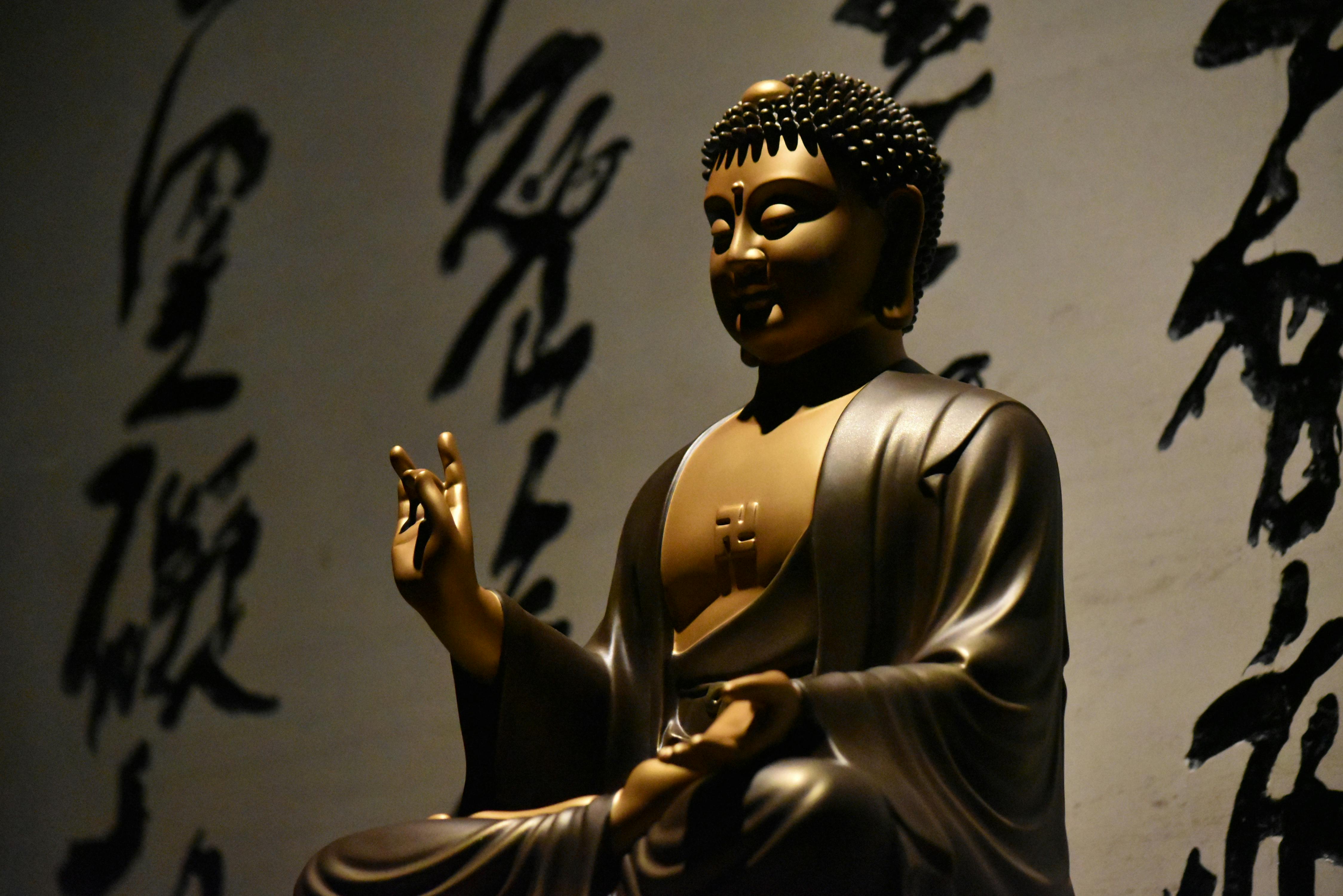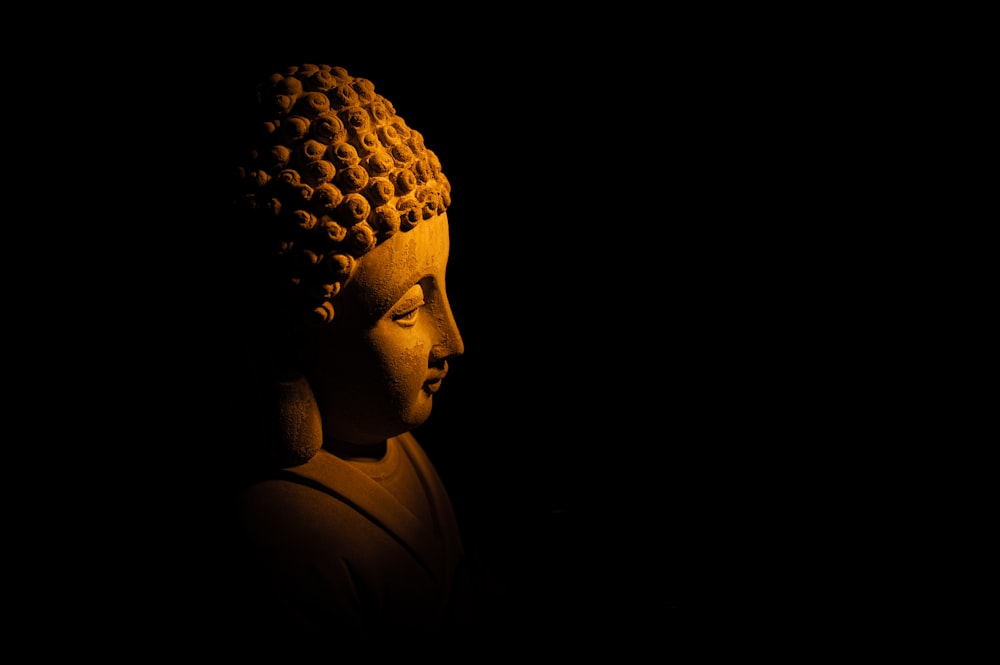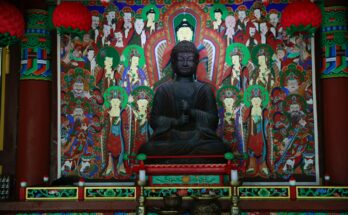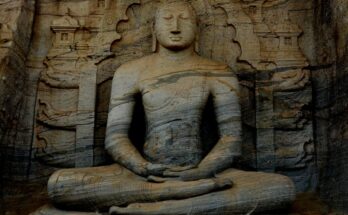Buddhism and science: Can both Co-exist?
The core Buddhist concepts of impermanence and interdependence are grounded in a logical understanding of reality that is comparable to contemporary science. This fundamentally similar approach keeps Buddhism and science from seriously clashing. Buddhism’s main goal is to alleviate spiritual suffering in humans, not to make sense of the natural rules.
As a result, Buddhists have freely incorporated the useful scientific innovations from every era and location. Scientific technology is neither good nor evil in the eyes of Buddhists. Buddhism acknowledges, however, that an egotistical use of technology can undermine the integrity of other life forms, which can therefore undermine human welfare. Buddhism places a strong emphasis on the harmonious coexistence of all creatures and the interconnectedness of all life.
Essence of Buddhism
Image via Unsplash.com
Gautama Buddha (463–383 B.C.E.) established Buddhism in northern western India after realizing the Prati¯tya-samutpa¯da (interdependent co-arising) truth. Buddhists define interdependence as the idea that all living things originate from the meeting point of causes and conditions and that every life is dependent upon the existence of others. The phrase has two interpretations. First, a basic tenet of the cosmos is interconnectedness. Even if there are many differences in the earth, every creature coexists and develops in harmony with the enormous web of interdependence that supports all life.
Instead of being a collection of disparate, antagonistic components, the world is an interconnected, dynamic, cooperative totality. Buddhists recognize that there is no such thing as an unchanging, permanent, or unconditional entity. Nothing is independent of anything else.
Second, interdependence is a reality of caring relationships rather than a mechanical law of nature. Developing an awareness of interdependence fosters compassion for all living things. Because all beings are mutually dependent, they deserve respect. Every human is a unique entity existing in the cosmos. Buddhism teaches people to develop an empathic mind that recognizes all sentient beings as fellow living things and to recognize their oneness with them.
Buddhism and Science
Throughout history, Buddhists have emphasized acts of compassion towards all living things and placed the highest weight on a supermundane understanding that transcends secular attachments. Buddhists saw no need to participate in customs that have been prevalent in the civilizations of the many nations where Buddhism has spread, such as sacrifice ceremonies, divination, or astrology. The natural sciences also never played a major role in Buddhist practice, despite the fact that Buddhists were keen to incorporate knowledge of pharmacology and medicine, as well as more useful scientific technologies, such as those used in the production of paper and ink, metallurgy, architecture, and sculpture, into their practices.
Their excellent talents in building temples, casting and carving statues, and printing texts were all made possible by their practical knowledge, which also contributed to the propagation of Buddhism. It is often recognized that India is where the ideas of fractions and zero were initially conceived. The finding of zero is thought to have something to do with the Buddhist idea of anatman, or impermanence (no-self).
The common Path?
Image via Unsplash.com
With an emphasis on the outside world, science aims to objectively examine all phenomena, including those involving humans, in order to understand the underlying principles of each and to use its findings to improve the quality of life for all. Buddhist doctrine, on the other hand, is primarily concerned with the inner self as it confronts the reality of suffering.
The path of Buddhism seeks to identify and eliminate the sources of suffering in order to realize each person’s full potential and promote their mental well-being. As a result, Buddhism, which emphasizes the person, did not try to create a mechanical model of the universe or construct an objective viewpoint from which to observe the cosmos and natural occurrences.
Buddhist Cosmology
The foundation of Buddhist cosmology is the idea that humans and nature coexist peacefully rather than in opposition to one another. Consequently, in the Buddhist cosmology, nature, or the outside world, has never been viewed as just material existence. The Abhidhaemakosabhasya, written by Vasuvandhu in the fifth century c.e., is one of the most prominent accounts of Buddhist cosmology. It says that a huge ring of wind floats within empty space at the universe’s foundation.
The ring has a circumference of 1059 yojanas and a thickness of 1,600,000 yojana (one yojana is around seven miles). There is a ring of water above the ring of wind. And a ring of metal sits atop the water ring. Above the metal ring is a layer of water, an ocean. There is a mountain known as Sumeru in the middle of the ocean. Eighty thousand yojanas is the height of the mountain. Mount Sumeru is encircled by eight oceans, nine mountain ranges, and the sun and moon. This is the world of samsara, the six realms of transmigration.
Six realms: Buddhism

Image via Pexels.com
Hell (naraka), the realm of hungry ghosts (preta). The realm of beasts (tiryand: the realm in which beasts kill each other). And the realm of humans (manusa: despite human suffering, humans are aware of their impermanence and ignorance and are able to seek the true living). The realm of titans (asura: deities of anger and fighting). And the realm of heavenly beings (devas) make up the world of the six realms of transmigration. The world of pain is comprised of these six worlds.
Most Buddhists held that this cosmology accurately depicted the structure of the cosmos. Until contemporary Western scientific theories explaining the form of the Earth and the solar system were introduced into Buddhist countries like India, China, and Japan.
But Buddhist cosmology was not developed as a map of the Earth derived from astronomical observations or geographic surveys. Theravada and Mahayana Indian Buddhist monks who meditated on the lofty Himalayan mountains to the north of the subcontinent. They established the spiritual vision that became Buddhist cosmology. This cosmological vision seeks to unveil the reality of this world.






